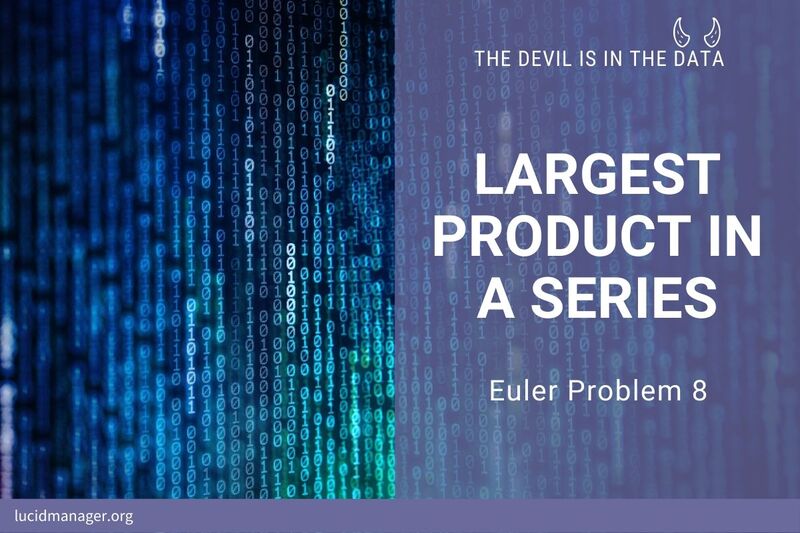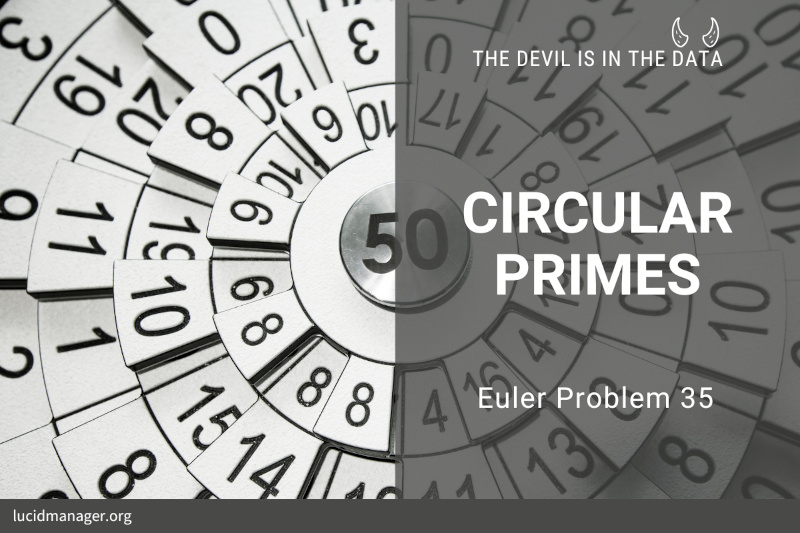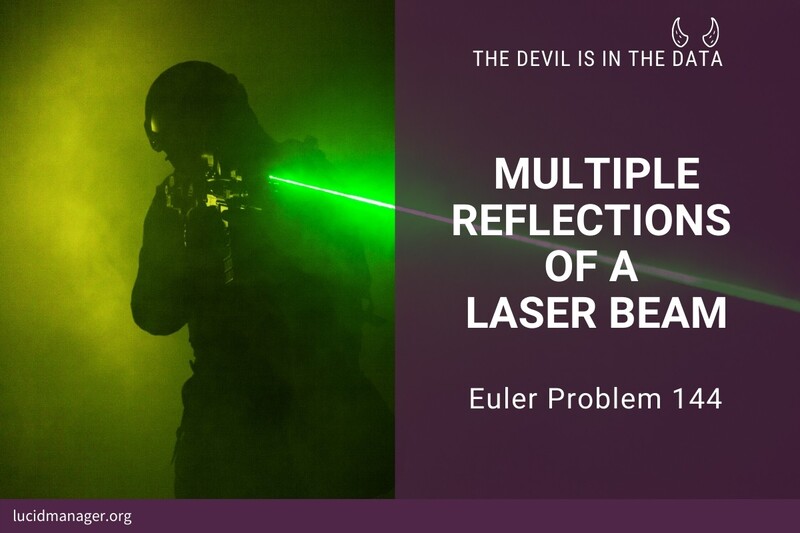
Project Euler 8: Largest product in a series

Peter Prevos |
220 words | 2 minutes
Share this content
Project Euler 8 combines mathematics with text analysis. Just like problem 11, it asks for the largest product in a grid.
Project Euler 8 Definition
The four adjacent digits in the 1,000-digit number below with the greatest product are 9 × 9 × 8 × 9 = 5832.
73167176531330624919225119674426574742355349194934
96983520312774506326239578318016984801869478851843
85861560789112949495459501737958331952853208805511
12540698747158523863050715693290963295227443043557
66896648950445244523161731856403098711121722383113
62229893423380308135336276614282806444486645238749
30358907296290491560440772390713810515859307960866
70172427121883998797908792274921901699720888093776
65727333001053367881220235421809751254540594752243
52584907711670556013604839586446706324415722155397
53697817977846174064955149290862569321978468622482
83972241375657056057490261407972968652414535100474
82166370484403199890008895243450658541227588666881
16427171479924442928230863465674813919123162824586
17866458359124566529476545682848912883142607690042
24219022671055626321111109370544217506941658960408
07198403850962455444362981230987879927244284909188
84580156166097919133875499200524063689912560717606
05886116467109405077541002256983155200055935729725
71636269561882670428252483600823257530420752963450Find the thirteen adjacent digits in the 1,000-digit number that have the greatest product. What is the value of this product?
Euler Problem 8 Proposed Solution
The first step is to define the digits as a character string with the 1000 digits. The answer is found by cycling through all 13-character n-grams to find the highest product using the prod function. The next step strips the 13 numbers into separate digits and multiplies them with each other with the prod() function.
## Project Euler 8: Largest product in a series
digits <- "7316717653133062491922511967442657474235534919493496983520312774506326239578318016984801869478851843858615607891129494954595017379583319528532088055111254069874715852386305071569329096329522744304355766896648950445244523161731856403098711121722383113622298934233803081353362766142828064444866452387493035890729629049156044077239071381051585930796086670172427121883998797908792274921901699720888093776657273330010533678812202354218097512545405947522435258490771167055601360483958644670632441572215539753697817977846174064955149290862569321978468622482839722413756570560574902614079729686524145351004748216637048440319989000889524345065854122758866688116427171479924442928230863465674813919123162824586178664583591245665294765456828489128831426076900422421902267105562632111110937054421750694165896040807198403850962455444362981230987879927244284909188845801561660979191338754992005240636899125607176060588611646710940507754100225698315520005593572972571636269561882670428252483600823257530420752963450"
ngram <- 13 # Define length
answer <- 0
# Clycle through digits
for (i in 1:(nchar(digits) - ngram + 1)) {
adjecent <- substr(digits, i, i + ngram - 1) # 13 consecutive digits
mult <- prod(as.numeric(unlist(strsplit(adjecent, "")))) # Define product
if (mult > answer) # Largest?
answer <- mult
}
print(answer)Share this content


